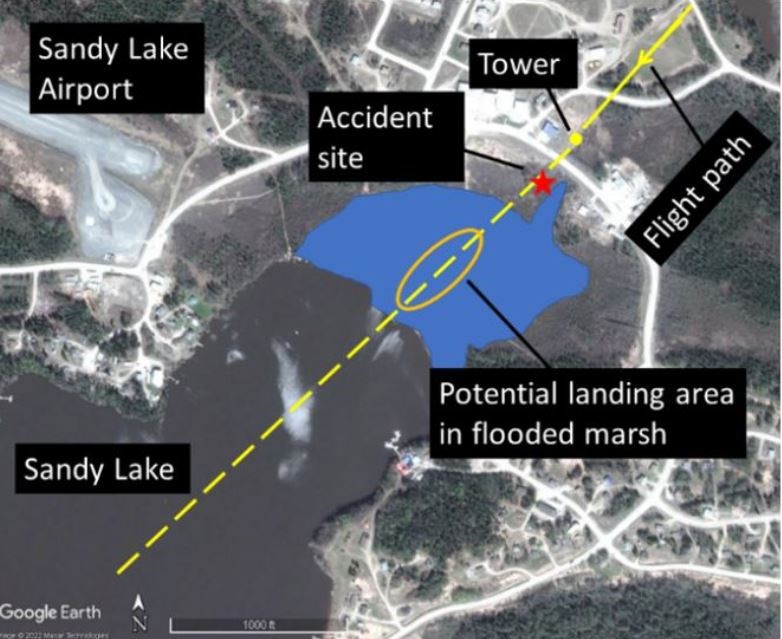THUNDER BAY — The approach environment for landing an aircraft at the Sandy Lake First Nation water aerodrome in Northwestern Ontario was different from normal at the time of a fatal plane crash last May.
The pilot of a float plane owned by Sandy Lake Seaplane Service Ltd. had been flying over the community on final approach for a landing at about 6:50 p.m..
He died after the aircraft struck a 40-metre-tall communications tower located at the Nishnawbe Aski Police Service detachment, then hit the ground and caught on fire.
According to a report issued Tuesday by the Transportation Safety Board of Canada, on May 26 Sandy Lake had a higher-than-normal water level caused by an unusually heavy snow melt and a rainy spring.
As a result, an area close to the typical landing zone that is usually a marsh was fully submerged in water.
The TSB report does not specifically cite a cause of the collision.
"It is important for pilots to remember that a change in a familiar approach environment can cause obstacles that are not normally an issue to be come a factor during landing," the report, which includes a safety message, reads. "Therefore, pilots must remain vigilant when selecting a landing area to ensure a safe distance is maintained from obstacles."
Maps attached to the report show Sandy Lake with a normal water level, as well as with the water level on the day of the fatal collision. The potential landing area in the flooded area is much closer to the communications tower than the typical landing zone is when the water level is normal.
The accident occurred as the pilot was returning from a trip to bring fuel and groceries to a cabin at northeast of Sandy Lake.
He had 20,000 hours of flying time, a substantial portion of which was flying in the Sandy Lake area.
A review of the aircraft journey log and technical records revealed no outstanding defects that may have contributed to the collision.
